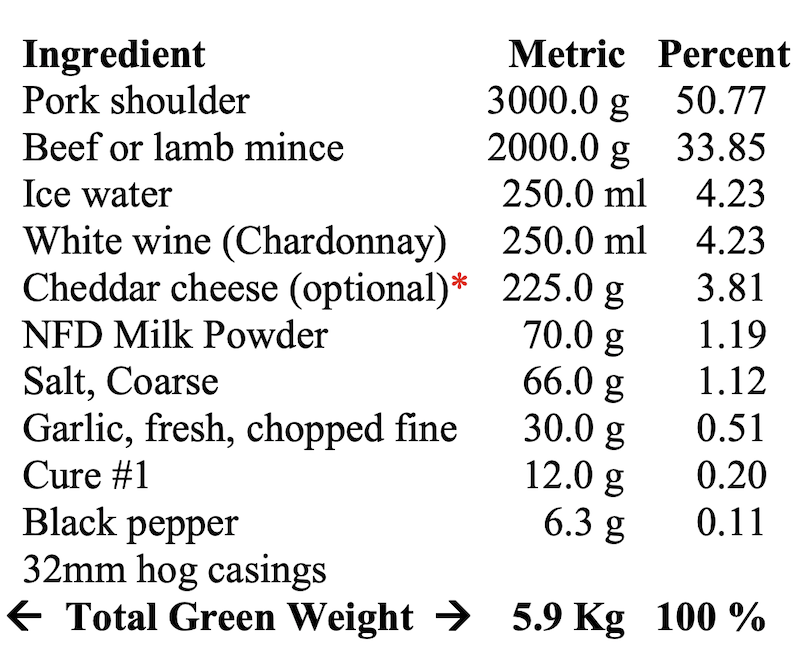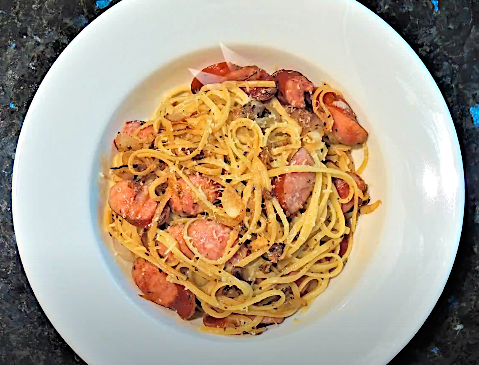This Australian Kransky sausage guide hopes to be a journey of discovery and to add more spice to our gastronomical experience.
The guide will cover the Kransky’s origin, one recipe, its preparation and its the unique taste. I will also cover its long association with the State of South Australia where it began life in this continent.
This is also a follow up to my December 2020 post on discovering the wonderful taste of a Kransky sausage. It was an unexpected discovery then for the family and me.
History, origin and early migrants
The Kransky sausage originated in Europe when borders were fluid. Somewhere in Slovenia with Croatia, Austria and to some extent Germany making similar claims. Due to their proximity, these claims would have some merit.
Slovenia however successfully registered it officially as their heritage food with the European Commission.
Research shows that it originated from Kranjska, a former province in the Austro-Hungarian Empire. The sausage was and is called “kranjska klobas“. This region is in the North West corner of Slovenia and close to the border with Austria and Italy. Kranjska is part of the the wider historical Carniola region. Hence a second name associated with this sausage, the “Carniolan sausage”.

The name Kransky however as far I can tell is Australian in origin, an anglicised version of the original Slovenian name. Krainerwurst is the Austrian ( as in Austria ) version and is also available where German sausages are available.
Timely to mention that similar sausages are called differently in other parts of the World where migrants have moved to.
Like nearly all things in Australia, this recipe came across with early migrants from Europe. Those from that part of Europe who first settled in the free state of South Australia over others parts of Australia. The old World traditions of that that region kept alive as the migrant trail continued over later years.
The biggest number of migrants from this region were Germanic in origin. The Australian Kransky sausage therefore is associated closely with Australians of German heritage. The Kransky in Adelaide and South Australia even today are linked with traders and companies with German migrant past.
The recipe
Here is a widely circulated South Australian recipe by Steve Gaskin from Murray Bridge, just outside of Adelaide, South Australia. I have seen this recipe in circulation outside Australia in cooking forums. This is the cheese version.

The unique taste
The Kransky has both pork and beef meat which is a rarity in the culinary world. Many cultures do not mix meat from different animals for the same dish. This is not related to religion. The meat mix ratio are clearly prescriptive, suggesting the intention to create a particular flavour. A reason why it carries that taste.
The original portions range from 65 to 70 % pork shoulders, 10 to 15% pork bacon and 15 % beef mince. Garlic and coarse black pepper are the other key ingredients.
The preparation process is quite onerous. The meat preparation temperature (not the cooking temperature) and careful trimming being indicative. There are variations from the original but the pork portion is always much higher.
Growing popularity
In some ways the Australian Kransky sausage is heading in the same direction as the Iberian Chorizo. Another speciality sausage that has its own signature taste and well known internationally.
Well, I noticed it’s been gaining popularity in recent years across Australia. I have seen it mentioned a few times on food and cooking media, both on TV and the internet. In some cases I have seen errors. In one instance a recipe for the Kransky called for “pork kransky sausage”. This says the author or chef has little idea what a Kransky is all about.
Though seldom served for breakfast in cafe and eateries nor at BBQs it stands on its own. Best sought as the sausage of choice for a hotdog as well on culinary courtesans’ tables.

Should you make your own?
My advice is not to go there. Something I learnt about old World recipes is that it never comes out right. This is despite following the recipe carefully.
Either it has to do with a missing ingredient or some part of the process is difficult. Or the right equipment is not available. I am told for instance that the use of hog casings which many tend to substitute is a must.
South Australians and those in Adelaide are lucky. We have smallgoods vendors who have a long history of handling old world recipes from that part of the World.
How do you take your Kransky?
It goes best as a hot dog with sautéed onions or sauerkraut with a dash of mustard. The roll or bun must be soft.
I have seen cooking media articles showing hard rolls so something has been missed. The difference is chalk and cheese, food pun intended.

Though already smoked, do cook it in a pan or grill on low heat and do not prick or slice the skin. The low heat would stop the skin splitting. This helps to retain the juices and if it is the cheese variety, you do not want the cheese seeping out. It can also be boiled or baked.
The other good ways to have a Kransky is to pair it with vegetables or pasta. Sliced and sautéed with mixed vegetables on a skillet. Something most speciality sausages do well such as the Iberian Chorizo.
In pasta dishes, the sliced Kransky replaces the usual meat mince. The taste of the sausage will be obvious. Try it at the next gathering of family and friends. I am sure they will talk about it.
It does not however go well with English styled full breakfast where you have bacon, eggs, sausages, mushrooms and toast. There are just too many flavours and the usual regular variety of sausages would do.
Kransky from South Australia
The Kransky is a part of South Australian state’s food culture and heritage. No different to the Australian Pasty which is now 150 years old, brought over by Cornish migrants to South Australia.
This insight will help those new to the country and for those who have yet to try it. And those who genuinely think that it was introduced recently to Australia. Not realising that it has been in South Australia for close to 100 years.
Adelaide’s Central Market is the place to go for speciality sausages. You will find the Kransky with the more familiar Frankfurter, Bratwurst sausages. Plus other German, Polish and Croatian speciality sausages of that old European region.
I do hope you enjoy the Kransky as we do in South Australia. Bon Appetit!!


Pingback: Food Adelaide - Part 1 - Adelaide wide open
Pingback: Food Adelaide - Part 2 - Adelaide wide open